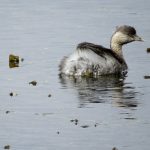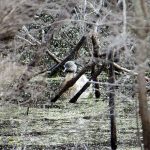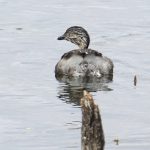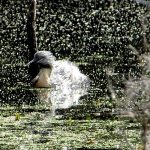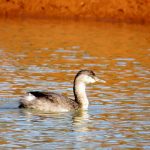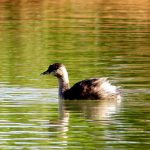HOARY-HEADED GREBE
The Hoary-headed Grebe is a small waterbird native to Australia and parts of New Guinea. This bird is known for its striking appearance and interesting behaviors. They are named for their distinctive hoary or silvery-white head and neck during the breeding season. Outside of the breeding season, their plumage becomes more subdued and greyish. Hoary-headed Grebes are small birds, measuring about 28-31 cm in length.
They are typically found in freshwater habitats, including lakes, ponds, swamps, and lagoons. They prefer areas with abundant aquatic vegetation, which provides both cover and nesting sites.
During the breeding season, Hoary-headed Grebes engage in elaborate courtship displays. These displays often involve synchronized swimming, head bobbing, and mutual preening. Their nests are floating structures made of aquatic vegetation, anchored to submerged plants.
Both the male and female Hoary-headed Grebes share incubation duties, with the eggs hatching after about three weeks. Once the chicks hatch, they are carried on the parents’ backs for protection and warmth. The parents also teach the young to swim and forage.
Their diet primarily consists of small aquatic invertebrates such as insects, crustaceans, and small fish. They are skilled divers and can spend extended periods underwater foraging for food.
While they are mostly sedentary, some populations of Hoary-headed Grebes undertake local movements or migrations in response to changing water conditions and food availability.
Hoary-headed Grebes are not particularly vocal birds, but they do produce soft calls, whistles, and trills during the breeding season. These vocalizations are often used in courtship and communication with their mates.
While they are excellent swimmers and divers, Hoary-headed Grebes have relatively small wings, making them less proficient in flight compared to other birds. They often use their wings for propulsion while swimming underwater.

